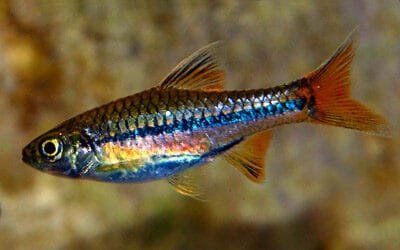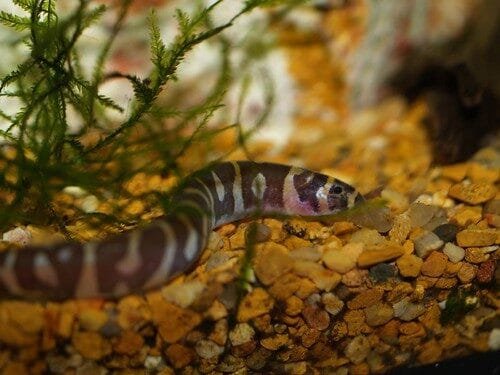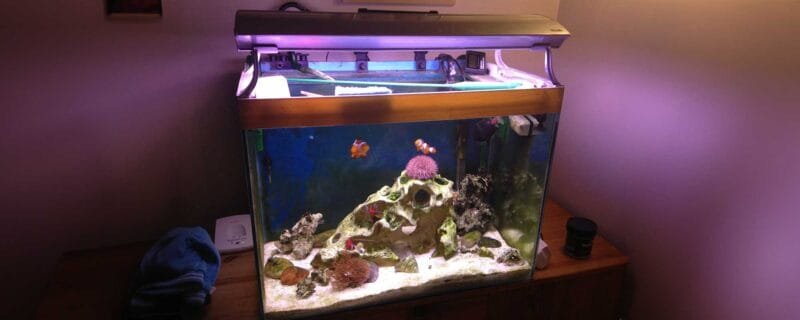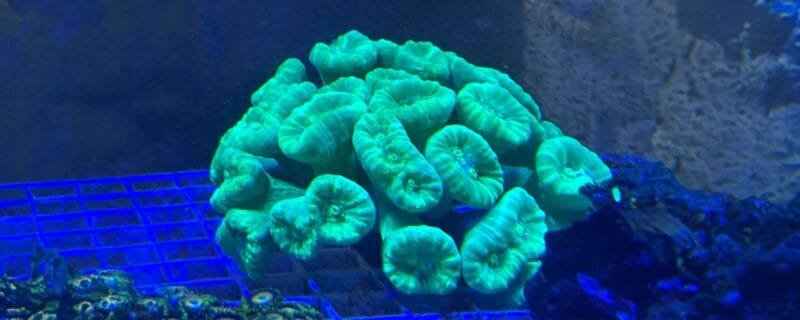The Blackline Rasbora (Rasbora borapetensis), also commonly referred to as the Red-tailed Rasbora or Borapet Rasbora, is a small and elegant freshwater fish popular in the aquarium trade. Known for its shimmering silver body and bold black stripe running laterally from head to tail, this species adds movement and contrast to community tanks. Easy to care for, peaceful in temperament, and naturally schooling, it is an excellent choice for both beginner and experienced aquarists.
Native Habitat
The Blackline Rasbora is native to Southeast Asia, particularly Thailand, Cambodia, Laos, and Vietnam. It is often found in rivers, ponds, marshes, and flooded fields, thriving in slow-moving or standing waters rich in vegetation. The species name “borapetensis” refers to Thailand’s Bueng Borapet swamp, a key natural habitat.
Its natural environment consists of slightly acidic to neutral waters with plenty of aquatic plants, which provide shelter and breeding grounds. Understanding this habitat helps aquarists recreate ideal tank conditions for the species in captivity.
Size
Blackline Rasboras are relatively small fish, reaching an adult size of about 2.5 to 3 inches (6–7.5 cm). Their modest size makes them well-suited to medium-sized aquariums where they can be kept in schools of at least six individuals.
Diet
In the wild, Rasbora borapetensis feeds on small insects, zooplankton, and plant matter. In aquariums, they are not fussy eaters and thrive on a varied diet:
-
High-quality flake food
-
Micro pellets
-
Frozen or live foods (such as daphnia, brine shrimp, and bloodworms)
-
Occasional vegetable matter for balance
A balanced diet ensures they maintain vibrant coloration, particularly the striking black line and reddish tail.
Sexing
Sexual dimorphism in Blackline Rasboras is subtle. Females tend to have fuller, rounder bodies when viewed from above, especially when carrying eggs. Males are generally slimmer and may display slightly more vivid colors during breeding displays.
Breeding
Breeding Blackline Rasboras is possible in captivity, though it requires careful preparation:
-
Spawning tank setup: Provide a separate tank with fine-leaved plants or spawning mops.
-
Water conditions: Slightly acidic water (pH 6.0–6.5), soft to medium hardness, and a temperature around 77–80°F (25–27°C).
-
Breeding behavior: They are egg scatterers, with the female releasing eggs that are fertilized by the male.
-
Egg care: Parents do not guard the eggs and may eat them, so separating the adults after spawning is essential.
-
Raising fry: Eggs hatch within 24–36 hours, and fry become free-swimming after 3–4 days. Infusoria and liquid fry food should be offered initially, followed by baby brine shrimp.
Water Conditions
To replicate their natural environment, Blackline Rasboras thrive best in the following water parameters:
-
Temperature: 72–81°F (22–27°C)
-
pH: 6.0–7.5
-
Hardness: 2–12 dGH
They prefer aquariums with gentle filtration, soft lighting, and abundant plants, which mimic their swampy, shaded native waters.
Ease of Care
Rasbora borapetensis is considered a hardy and beginner-friendly species. It adapts well to a range of conditions, tolerates minor fluctuations, and rarely falls ill if water quality is maintained. Its peaceful nature and small size further increase its appeal to community aquariums.
Community Compatibility
Blackline Rasboras are peaceful schooling fish that should always be kept in groups of at least six, ideally more. They are excellent tank mates for other small, non-aggressive species, such as:
-
Harlequin Rasboras
-
Gouramis (dwarf varieties)
-
Peaceful barbs (such as Cherry Barbs)
-
Livebearers (Guppies, Platies)
They should not be housed with aggressive or predatory fish, as their small size makes them vulnerable.
Species Variations and Albino Form
The Blackline Rasbora does not have many naturally occurring morphs, but in the aquarium trade an Albino variant has been selectively bred.
-
Albino Blackline Rasbora: Features a pale cream or golden body with reduced pigmentation. The characteristic black stripe is faint or absent, and the eyes are typically reddish. Despite its different appearance, the albino form has the same care requirements, behavior, and size as the standard Blackline Rasbora.
This variation can provide a striking contrast when kept alongside the standard form in the same school.
Relatives in the Rasbora Family
The Blackline Rasbora belongs to the genus Rasbora, which includes many small, schooling species popular in aquariums. Some close relatives include:
-
Harlequin Rasbora (Trigonostigma heteromorpha) – Known for its triangular black marking.
-
Scissortail Rasbora (Rasbora trilineata) – Larger, with distinct forked tails.
-
Chili Rasbora (Boraras brigittae) – A tiny, brilliantly red species.
These relatives share similar care requirements, making them suitable companions in community aquariums.
FAQs
1. How many Blackline Rasboras should be kept together?
At least six, though a larger school of 8–12 creates a more natural, dynamic display and reduces stress among the fish.
2. Can Blackline Rasboras live with bettas?
Yes, they can often coexist peacefully with non-aggressive bettas in a well-planted tank, though individual betta temperament varies.
3. Are Blackline Rasboras good for planted tanks?
Absolutely. They thrive in planted aquariums, where greenery provides cover and enhances their colors.





